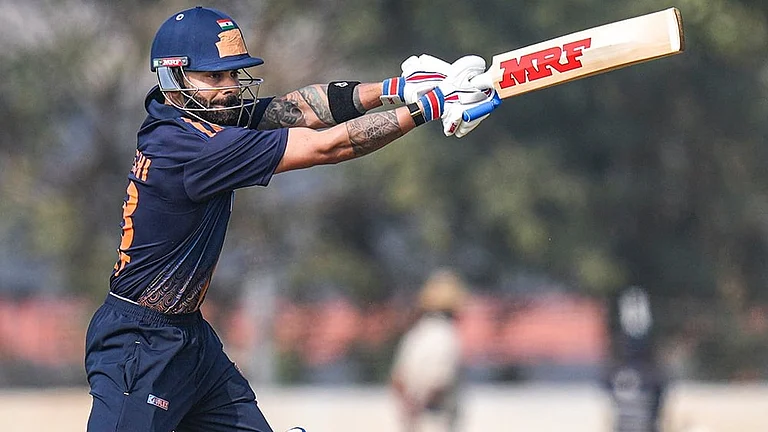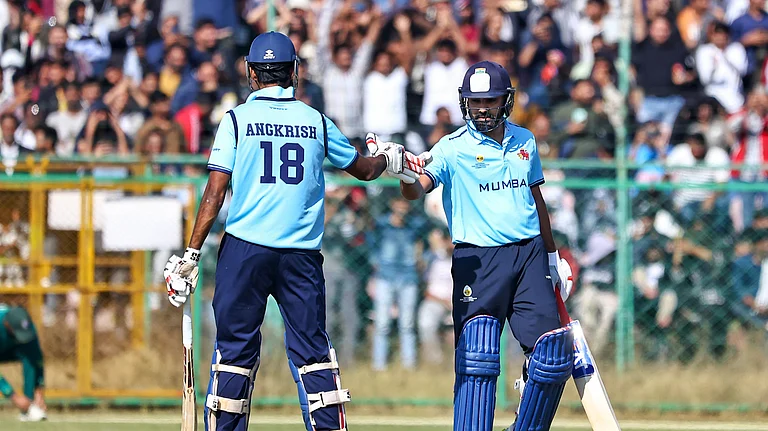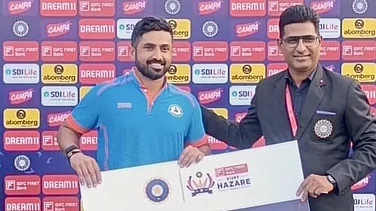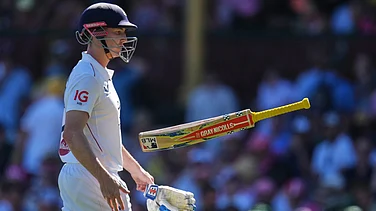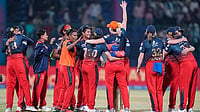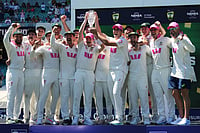Rajeev Shukla, Vice-President of the Board of Control for Cricket in India (BCCI), has addressed speculation surrounding Virat Kohli and Rohit Sharma’s Test cricket retirements. He affirmed their decisions were 'personal' choices.
India’s national Test cricket squad now transitions under head coach Gautam Gambhir and new Test captain Shubman Gill, amid the ongoing Anderson-Tendulkar Trophy series.
BCCI Dismisses ‘Forced Retirement’ Allegations
Rajeev Shukla, Vice-President of the Board of Control for Cricket in India (BCCI), commented on speculation that Virat Kohli and Rohit Sharma were ‘forced’ into Test retirement. Shukla strongly denied these claims, emphasising the respect both cricketers command within the organisation. "We consider them great batters... There is no question of forcing anyone out," Shukla stated "unequivocally".
His comments followed extensive discussion after both players stepped away from Test cricket just before the squad announcement for the England tour. The BCCI made it clear that Kohli and Sharma alone decided to retire from the longest format. Shukla stressed BCCI policy never dictates a player's retirement timing, confirming both star players retired voluntarily.
Despite widespread talk around India's recent downturn in Test performances and a perceived need for younger players, the BCCI confirmed no coercion influenced their decision. Both cricketers continue representing India in limited-overs formats, ensuring fans still see their contributions.
Kohli And Sharma's Test Exit
Rohit Sharma and Virat Kohli announced their Test cricket retirements in early May 2025. Rohit revealed his decision on May 7, followed by Kohli on May 12. Both cricketers used Instagram to inform fans and the cricketing world.
Kohli’s heartfelt post conveyed gratitude and pride for representing India in the ‘whites’. Sharma similarly affirmed his ongoing commitment to One-Day International (ODI) cricket, stating, "I will continue to represent India in the ODI format." Kohli, 36, and Sharma, 38, revealed their decisions during the Indian Premier League season.
This move 'shocked' many supporters and pundits, though team insiders had 'seen signs' such a decision was likely.
Former India bowling coach Paras Mhambrey suggested both players knew their time in the format was concluding. According to Mhambrey, "Virat didn’t have five years of Test cricket left in him... Sometimes, it’s the motivation bit. They may not have felt motivated enough to play that format. They would not be able to give their best to that format. And that’s the way they approach. So very selfless approach, both of them."
Most observers interpret this move as a transition to integrate younger talent, following India’s disappointing 2024–25 Test season. This included a series loss at home to New Zealand and a resounding defeat in the Border-Gavaskar Trophy against Australia.
The announcements generated significant reaction across social media. Fans shared shock, nostalgia, and gratitude. Memes, tributes, and emotional messages flooded platforms like Instagram and X (formerly Twitter), underscoring the cricketers' impact on India’s sporting identity. Many fans found the dual departure particularly difficult to accept, given both players’ standing as former Test captains and central figures in Indian cricket for over a decade.
India’s Team Transitions Under Gambhir, Gill
Now, with Gautam Gambhir as head coach, the Indian national squad focuses on rebuilding its Test team to regain its competitive standing. The Test side’s struggles in the 2024-25 season and the strategic exit of senior batsmen Kohli and Sharma propelled these changes, marking a new phase of transition. Gambhir, known for his tactical thinking and resolve, should foster a more aggressive team culture and develop the next generation of players.
India’s Test team entered a period of transition after the departures, experiencing a tough home series loss to New Zealand and a ‘whitewash’ in another significant series before the recent changes. The Indian team's renewed focus is on youthfulness, learning from previous setbacks, and striving for greater consistency in the longest format. Since Gambhir assumed his role and Gill became Test captain, India’s team displays grit and resilience.
Although India trails England 1-2 in the ongoing Anderson-Tendulkar Trophy, the youthful side has dominated specific sessions and delivered determined performances. For example, in the Lord’s Test, India nearly secured a spectacular win, falling short by only 22 runs, thanks to strong performances from Ravindra Jadeja, Jasprit Bumrah, and Mohammed Siraj. The team’s fighting spirit and competitive approach appear promising during this rebuilding phase.
Kohli’s and Sharma’s retirements deeply affected fans, who shared tributes and emotional messages across social platforms. While their departure leaves a clear gap, Rajeev Shukla reassured fans that both batsmen will continue to represent India in ODIs, including a much-anticipated series against Australia later this year. Meanwhile, the Test team, under Gambhir and Gill, concentrates on cultivating new talent and aiming to reclaim its historic dominance.
India’s Test Future: Consistency And Young Talent
India’s recent struggles in the longest format, particularly losses to New Zealand and Australia, underlined the urgent need for a generational shift. The ongoing Test series in England remains active as India looks to level the score, with the fourth Test scheduled for Manchester.
Despite the challenges, the new leadership team appears committed to restoring consistency, applying lessons from past defeats, and building a competitive spirit among the youthful players in the squad.







